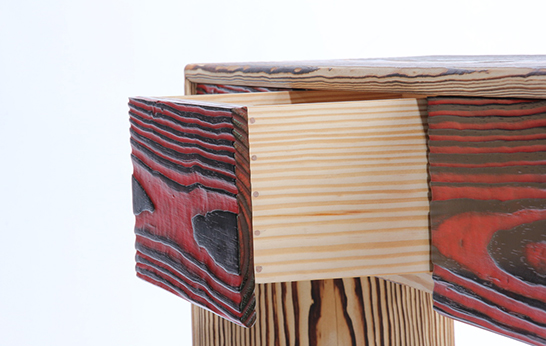
Charred Wood: Hospitality Trend
The history of charring wood to make furniture and clad buildings stems from Japan, where the longstanding ‘shou sufi ban’ method has been used for centuries as a way of making wood less susceptible to fire and insect infestation. Here we highlight five designers using blackened wood to stunning effect in new, contemporary design.
To make his Burn and Blast console table, British designer Will Phillips burnt yellow pine wood to soften its grain before sandblasting it. The blasting removes the softer wood and takes the pine back to its original color. Phillips then applies color to these areas while the areas of hardwood remain charred, creating a striking contrast. Colors can be altered and adapted to suit personal needs and taste.
Louie Rigano and Avantika Agarwal have used solid CMYK toner pigment as a wood finish for their Charcolor Furniture. The powdered pigment is sprinkled onto the wood and then blasted with a blowtorch, melting the powder into a liquid and charring the wood. The end result is a lightly blackened wood grain with a rich, colorful stain.
Young British furniture brand Tanti Design contrast English Ash and charred English Oak to stunning effect on their newly-launched line of tableware.
For his Locker furniture series, London-based Norwegian designer Magnus Pettersen contrasted blackened ash with perforated aluminum.
The graceful turned and tapered shape of Moran Woodworked Furniture’s Loblolly lamp is charred traditionally in a stove pipe of timber, raising the grain for a deep black color that still retains the documentation of the tree's growth. A glimpse of un-charred golden pine underscores the juxtaposition between material and process. The base is paired with nickel fixtures and a Kentucky-made white linen drum shade.
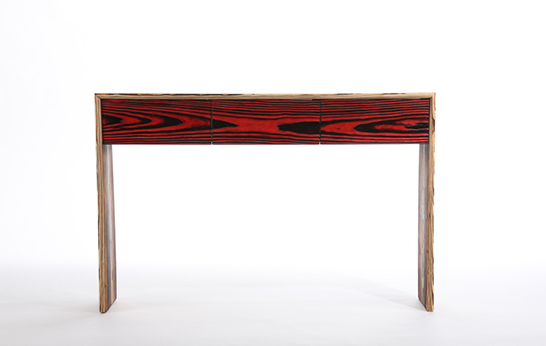
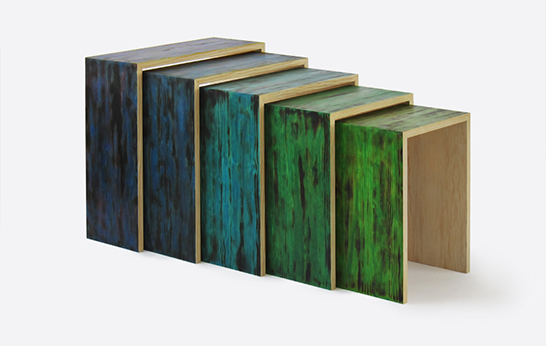
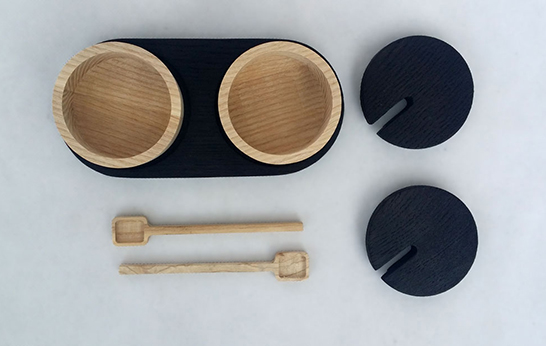

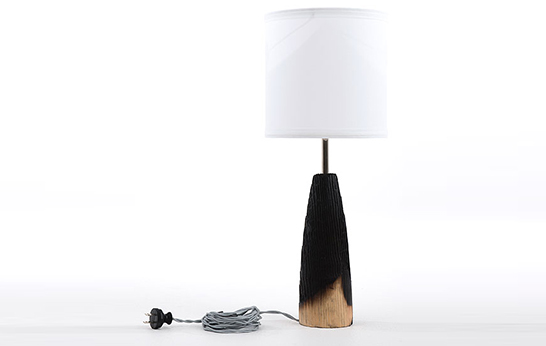

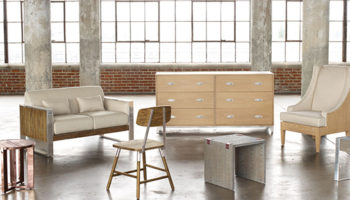
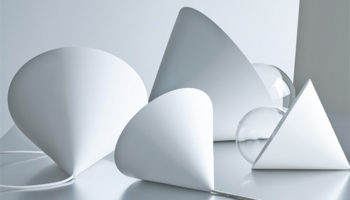
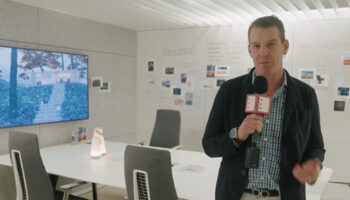
Leave a Reply